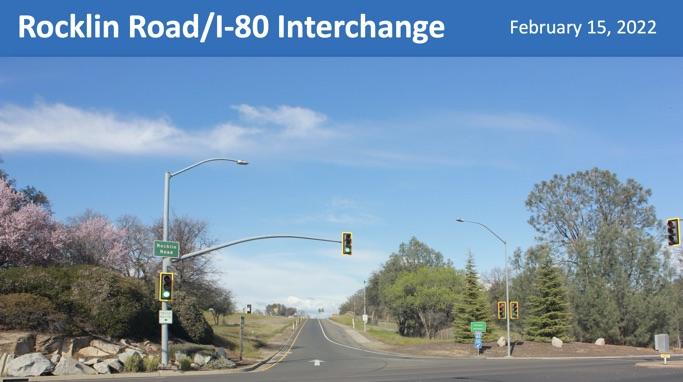Rocklin Road/I-80 Interchange
Stakeholder Advisory Meeting #2
On Tuesday, February 15th, 2022 from 10:00 – 11:30 a.m., the City of Rocklin held their second Stakeholder Meeting for the Rocklin Road/I-80 Interchange Improvement Project.
Download the Stakeholder Advisory Meeting #2 Summary


